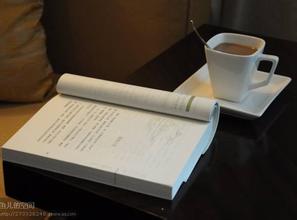Introduction to the description of taste and flavor of Colombian coffee bean red wine
Introduction to the description of taste and flavor of Colombian coffee bean red wine
According to Sasa's description in the competition, the processor injected carbon dioxide into the container to prevent oxidation from producing volatile acid, a process known as lactic acid fermentation, which produces malic acid and stone acid, which is relatively stable, so the beans fermented with lactic acid have a more mellow acidity, with cheese, nutty and creamy flavor.
As for the description of the difference between water and no water in the treatment of red wine, the editor is still in distress. The above contents still need to be considered. I hope you will discuss the next step and talk about the specific process of fermentation. First of all, Colombian farmers carefully pick coffee cherries and carefully select coffee red fruits to ensure that among the coffee cherries selected for processing, the percentage of immature cherries is less than 2%, defective beans less than 3%, and floating beans less than 5%.
The selected coffee cherries are placed in a specific container by the farmer's uncle (the beans used in the Australian barista Sasa competition are placed in a metal container). But in any case, the container should have a device similar to a red wine fermentation suppository or a single exhaust valve. In this way, carbon dioxide can be spilled through the device to control the concentration of air in the container. At this time, the coffee cherries in the container are fermented by acetic acid, and the beans from this reaction are relatively bright and clean, and the red wine treatment with lemon-sour coffee beans, also known as red wine treatment, is inspired by the brewing process of red wine. At present, only eight estates in Colombia have successfully introduced coffee beans treated with this method to the market. According to the data of these eight estates, we can roughly divide the types of red wine treatment into: acetic acid fermentation (Aerobic aerobic fermentation), lactic acid fermentation (Anaerobuic anaerobic fermentation), mixed fermentation (Mix Fermentation=Aerobic+Anaerobuic).
The traditional treatment method is difficult to control the changeable fermentation degree of coffee beans. But the rules of red wine treatment can ensure the quality of coffee beans by controlling the PH value, even temperature and humidity, and airtight fermentation makes the aromatic substances more difficult to volatilize. Before writing this article, the editor looked through all the data of the estates in Columbia that used red wine treatment, analyzed Sasa's description of the beans he chose this treatment during the competition, and looked at the fermentation principle of fruits in biology. Even so, there is still no detailed description in the data, including the official website description of the bean manor is only limited to the flavor. It is believed that this new way of handling is still in a state of secrecy and has not been popularized. of course, there is no comment.
Even though the details of red wine treatment are not known, the editor roughly summarizes the process description of "red wine treatment" by combining the consultation mentioned above and his own understanding of wine fermentation process.

Important Notice :
前街咖啡 FrontStreet Coffee has moved to new addredd:
FrontStreet Coffee Address: 315,Donghua East Road,GuangZhou
Tel:020 38364473
- Prev

Description of Coffee Flavor Flavor in Yega Ficher Manor, Ethiopia
Description of the flavor of coffee from the Yega Fichochel Manor in Ethiopia the characteristics of the variety of coffee is introduced in the producing area. Yejaschuffe itself is a small town with a population of about 20, 000, with three neighboring small producing areas Wenago, Kochere and Gelena Abaya. Because the flavor of the coffee produced is almost the same as that of Yejaschenne, it is also classified into the Yejaschuffe region. Yega, snow, coffee, no.
- Next

Introduction to the grinding scale of Yega Ficher flavor coffee bean description variety production area treatment method
Yega Ficher Coffee Bean description Variety production area treatment Grinding scale Yega Snow Coffee itself is a small town of about 20, 000 people, with three neighboring small producing areas Wenago, Kochere and Gelena Abaya, because the flavor of the coffee produced is almost the same as that of Yejasuffe, so it is also classified into the Yega Chefe area. Yega snow caffeine, whether it's Wen.
Related
- Detailed explanation of Jadeite planting Land in Panamanian Jadeite Manor introduction to the grading system of Jadeite competitive bidding, Red bid, Green bid and Rose Summer
- Story of Coffee planting in Brenka region of Costa Rica Stonehenge Manor anaerobic heavy honey treatment of flavor mouth
- What's on the barrel of Blue Mountain Coffee beans?
- Can American coffee also pull flowers? How to use hot American style to pull out a good-looking pattern?
- Can you make a cold extract with coffee beans? What is the right proportion for cold-extracted coffee formula?
- Indonesian PWN Gold Mandrine Coffee Origin Features Flavor How to Chong? Mandolin coffee is American.
- A brief introduction to the flavor characteristics of Brazilian yellow bourbon coffee beans
- What is the effect of different water quality on the flavor of cold-extracted coffee? What kind of water is best for brewing coffee?
- Why do you think of Rose Summer whenever you mention Panamanian coffee?
- Introduction to the characteristics of authentic blue mountain coffee bean producing areas? What is the CIB Coffee Authority in Jamaica?

